I knew from the beginning of the class that I would want to make a large sculpture regardless of the prompt for the final project. The prompt for the final project was to make something ‘dynamic’ which made me take a step back to think about how I would combine my idea of a large outdoor sculpture with a dynamic aspect. I spent some time walking around the sculpture walk where this would eventually be installed, and when I noticed how the tree branches were moving elegantly with the wind, I knew how I would make my sculpture move.
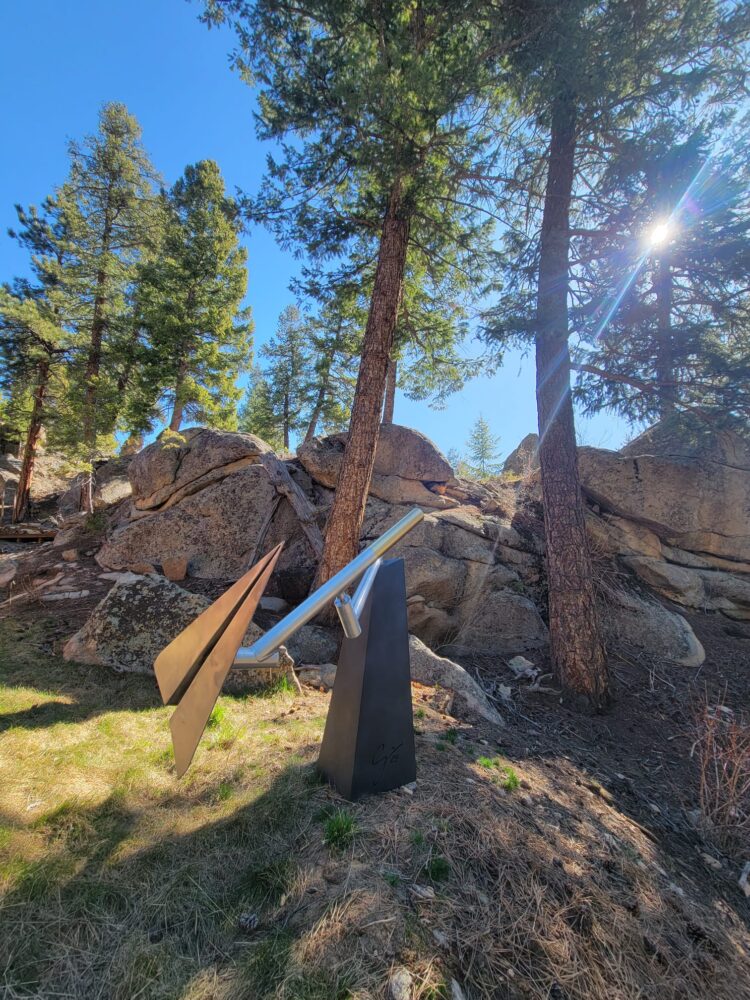
The Inspiration:
After scrolling through kinetic sculptures – trying to weed out the kitschy desk and garden accessories – I finally found a series of sculptures that caught my eye from a design perspective. The work of Jeff Kahn – seen below – really inspired me to incorporate multiple axes of rotation with an unbalanced look. I took inspiration from his work to estimate the lengths of each pivot arm, and some of the varying angles that he used.
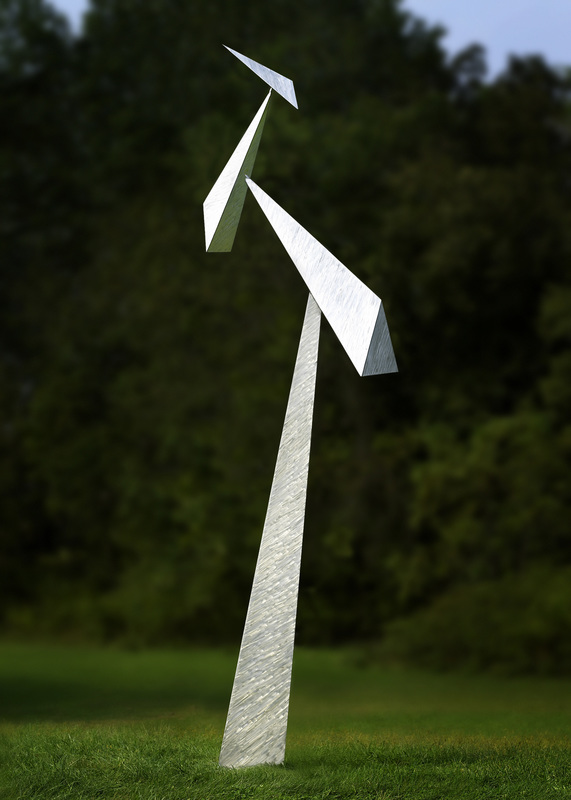
An example of the copper sculptures I didn’t want to mimic:
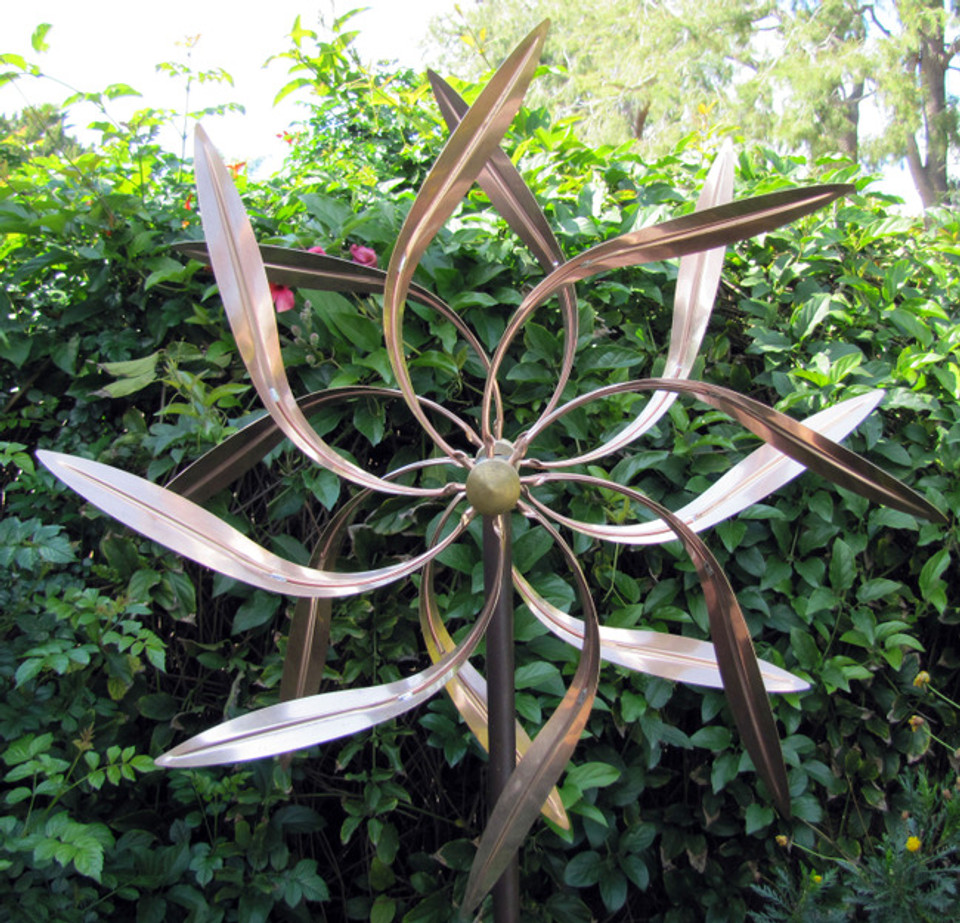
The Design:
The paper airplane means a lot to me as an individual. For one, I grew up creating paper airplanes with any piece of scrap paper I could find. This led me to try to invent my own ‘better’ designs and an obsession with making the best paper plane I could. This was one of my first experiences with the design iteration process, and has helped me be a better engineer even today. I was also fortunate to have traveled for much of my childhood, so I spent a lot of times on and off real planes. This shaped my view of the world in the sense that no destination seemed out of reach. The plane symbolizes the freedom to visit new places and see new things. This combination has led me to make art inspired by the simplicity and design of paper airplanes.
I knew that I wanted my final sculpture to be visually simple to emphasize the paper plane as the focal point. This would require more engineering than I had expected because, in order to make the sculpture visually simple, I had to simulate weights and design bearing housings to hide the mechanisms that make this work.
The bearing housing seen below utilizes two stainless steel ball bearings to produce smooth rotation with large masses perpendicular to the rotation. This design also allows torque perpendicular to the shaft without the bearings seizing up.
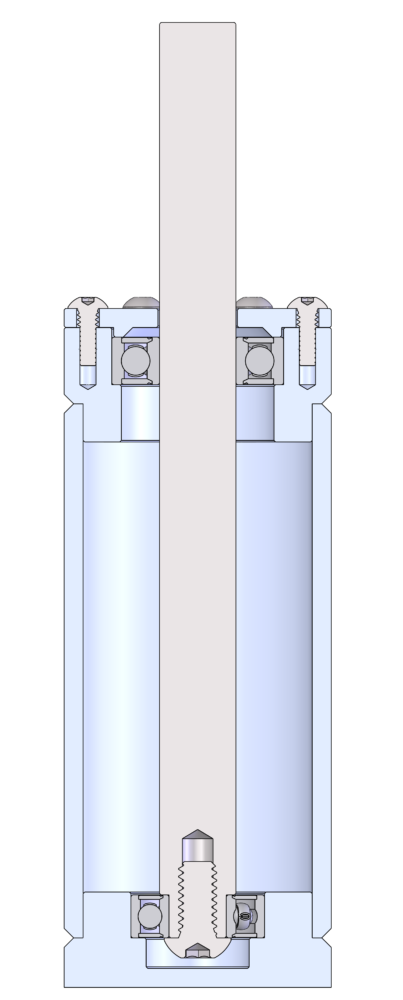
I designed these bearing housings to have the same outer diameter as the main bars of the sculpture so that they blend seamlessly with the design and so that I could order fewer different stock sizes. The overall design is meant to appear unbalanced with the large plane on one end the rods and no visible counter-balance. This was only achievable using Solidworks to determine the theoretical center of mass of each assembly so that I could specify the length of counter-balances required to maintain perfect balance and therefore chaotic motion.
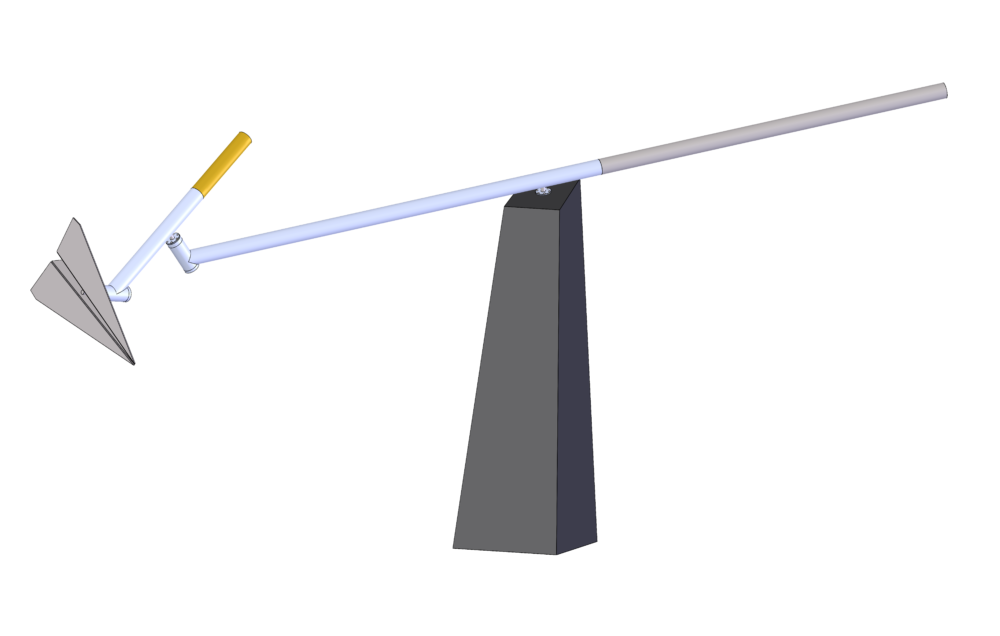
The elegance of the design – to me – comes with the use of brass and steel counter-balances that blend into the bar design of the rotating arms. This creates the illusion of imbalance and takes advantage of the difference in density of brass, steel, and aluminum. On top of the material choice, the main portions of the arms are made of 1/8″ wall aluminum tube to minimize weight as much as possible. The plane itself is made of 1/8″ thick stainless steel – chosen for its appearance and weather resistance because this will be installed outdoors.
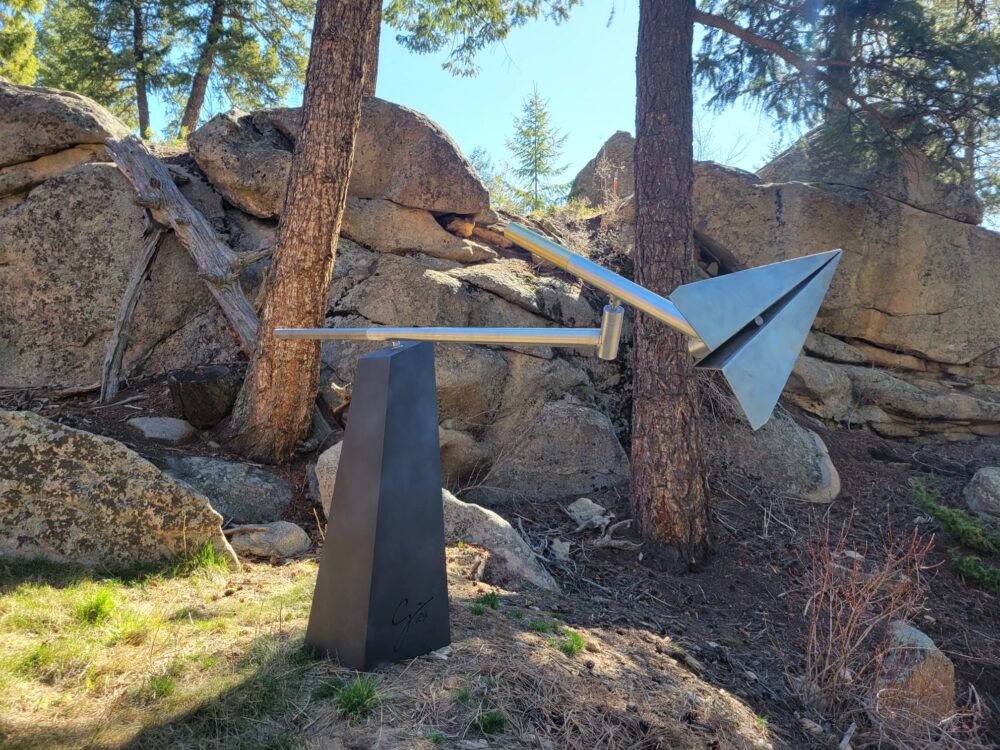
I knew that the aesthetic for this project wanted to be a stark contrast from the natural area where it will be installed, so I chose a sort of modern minimalism and took inspiration from some Bauhaus furniture design. I admired the elegance and simplicity of the exposed metal tube used in Breuer’s ‘Wassily Chair’ seen below, and decided to leave the metals of the sculpture natural allowing the contrast in the material colors to provide a subtle depth to the design.

The (e)Motion:
I was pleasantly surprised by the motion that I was able to achieve with this sculpture. I knew in my head that the plane would move chaotically because there were 3 pivot points that it could rotate about, however I could not imagine how each arm would rotate relative to one another. The video below shows the motion of this sculpture in a natural breeze.
I found that the largest of the arms was almost always moving, while the shorter arm and the plane took turns sharing the same kinetic energy. The plane would stop spinning for a while and the shorter arm would pick up the momentum before trading back once again. Once while watching the sculpture, I was able to witness this behavior with the large arm. When the large arm stopped, the momentum it carried was transferred to the smaller arm which began spinning quickly in contrast to the slow motion it previously displayed.
I found myself watching the nearly-finished sculpture for hours, constantly checking to see if it had come to a rest yet (it never did). Each time around the base, the plane’s motion was ever changing; never allowing the viewer to become bored with repetition. As the wind picked up, I expected the plane might spin faster, but instead, the right burst of wind would change the direction of the arms entirely. The sculpture would come to a sudden stop before picking up in the opposite direction.
The movement of the plane only emphasized the visual imbalance of the entire sculpture. Every time the viewer thinks they know how the plane will move, their expectations would be subverted and the motion would change. This may frustrate some, never being able to know exactly where the plane would end up, but it eventually lulls its audience into a rhythmic complacency. It emphasizes the beauty of the unknown and invites you to embrace the fluid nature of life.
References:
Naked Alien – https://www.jeffkahnsculpture.com/complete-catalog.html
Dancing Willow Leaves – https://stanwoodbrands.com/products/stanwood-wind-sculpture-dancing-willow-leaves
Club chair (model b3) – https://www.moma.org/collection/works/2851

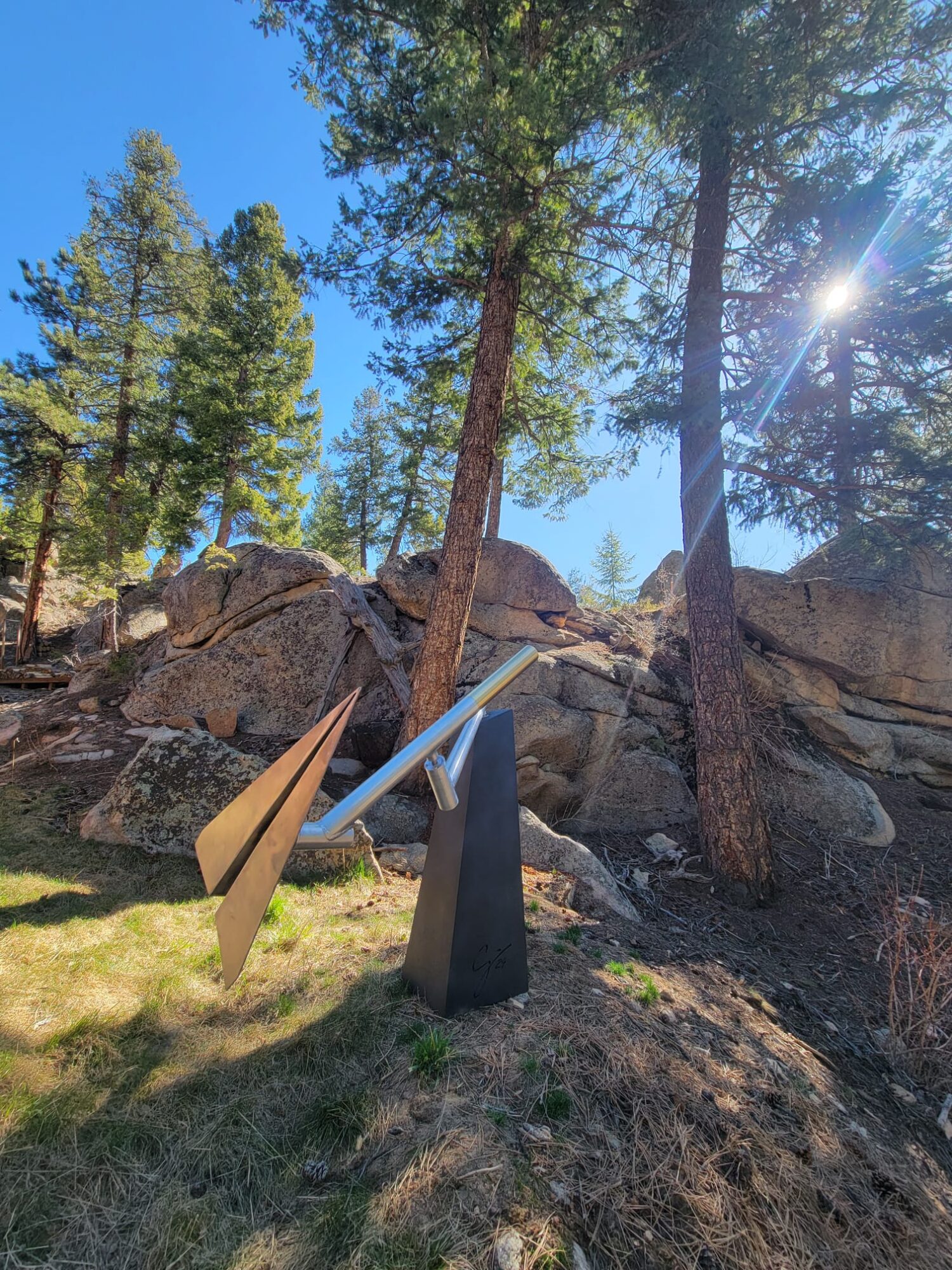
5 Comments. Leave new
Hello Sam, such a wonderful sculpture. It blends well with the environment almost complimenting the motions of the natural structures around it. It was so serene to watch it in motion.
Hi Sam, very awesome project that really stands out because how well it was designed and made. I can definitely see the inspiration from the Naked Alien sculpture. I like how you did a thorough analysis on the engineering + the aesthetics for your design. It sounds like you are going to place it in a sculpture walk, if you don’t mind sharing, where do you plan on putting it? It would be cool to see it out there.
Hi Kevin, I plan on installing it at my parents house where they have a small loop with several other sculptures that my dad and I made. This piece in particular will be at a high point on the loop so that it is more exposed to the wind and can have better movement. So far, this is the first sculpture being installed that has motion.
This is really cool! I like how you were able to make bearing housings and do all the welding for this project, it is very impressive. The end result really represents the vision you were going for and this thing looks really solid and like it will last a while. Where are you going to put this? Also are you going to paint the base black like it is shown in the CAD render?
Hi Alex, I am planning on installing this at my parents house where they have a small loop with several other sculptures that my dad and I made. There is a spot along the walk that is raised so that it will be more exposed in the wind and will move more. As for the base, it is hard to tell from the images but the base has been painted a very (emphasis on very) dark grey with some texture. I tried to emulate a slate look so that the base blends into the background better but that last video is an early video from before that was painted.